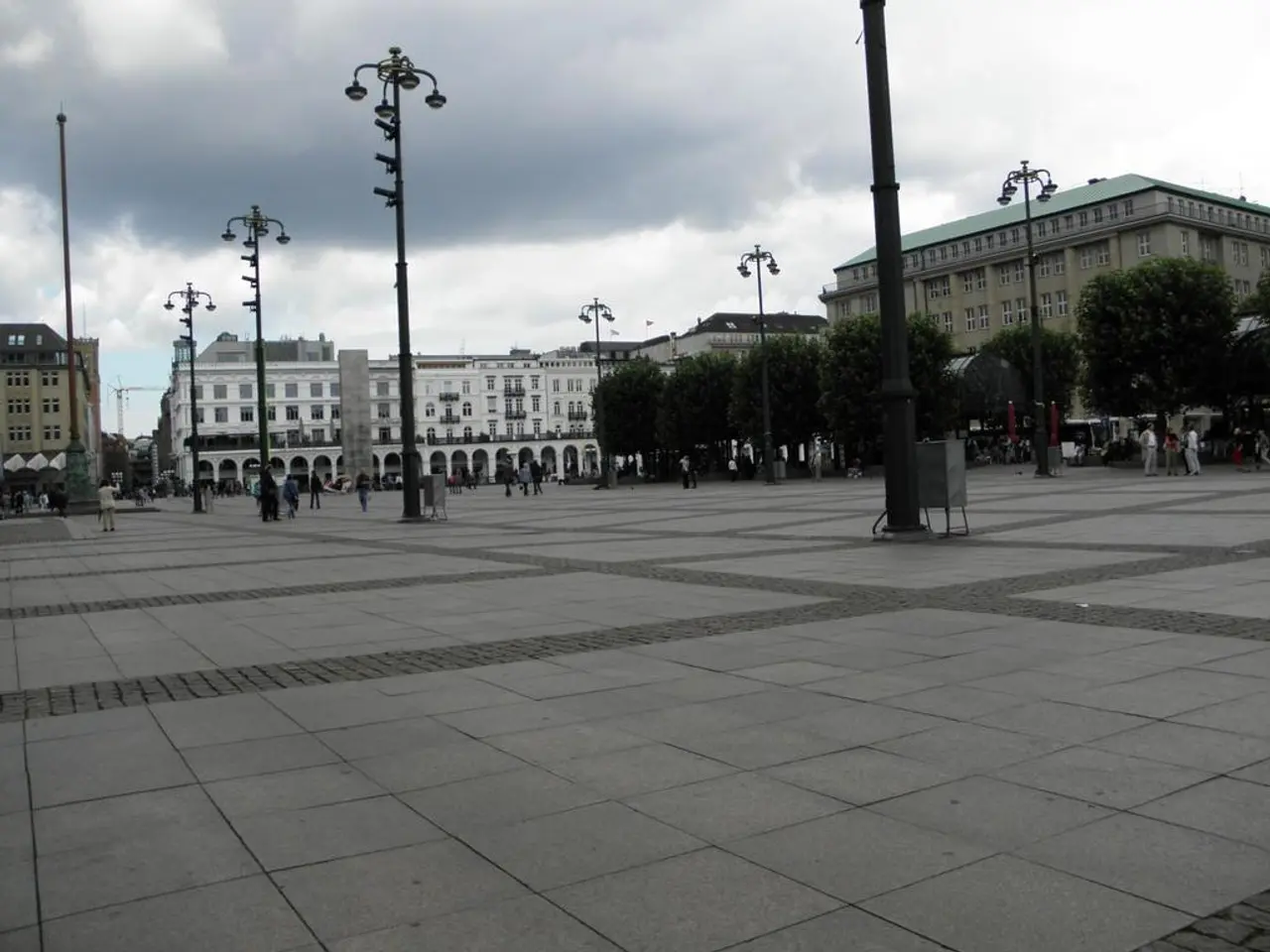End of Peak Summer in UAE on August 10 - Will Temperatures Drop?
The Al Mirzam period, a notorious phase of the UAE's summer heat, has reached its peak, with temperatures soaring above 50°C in some areas. During this period, hot desert winds known as 'samum' reach their peak, exacerbating the heat and often reducing visibility due to dust.
On August 1, 2025, the temperature in Sweihan, Al Ain, reached an astounding 51.8°C, the highest recorded in the UAE that year[1][2][3][4][5]. Typical peak temperatures during Al Mirzam include:
- Sweihan, Al Ain: up to 51.8°C
- Abu Dhabi city: highs around 44°C to lows of 34°C
- Dubai: highs from 43°C down to lows of 34°C
- Sharjah: highs of 43°C and lows of 33°C[1]
However, relief is on the horizon. The National Centre of Meteorology (NCM) predicts rains from August 10 to August 12, which should bring down temperatures[6]. Following this, daytime temperatures drop significantly. For instance, Gasyoura, located in the south UAE, is expected to fall to about 29°C on August 10. Abu Dhabi city will see a high of about 44°C, a noticeable decrease from the peak temperatures before[1]. Dubai and Sharjah will see temperatures dip to the low to mid-40s Celsius during the day and low 30s at night.
The Al Mirzam period represents the hottest phase of summer in the UAE, with temperatures exceeding 50°C in desert areas and generally high 40s to low 50s peak readings. After this period, temperatures decline somewhat, with rains helping to cool the environment, but daytime highs in major cities still remain above 40°C for some time before further seasonal cooling occurs[1][3][4].
In addition to the heat, residents have experienced heat-related incidents in emergency rooms over the last few weeks. Doctors have urged residents to increase electrolyte intake in addition to plain water to stay hydrated during these challenging conditions[7]. Rainfall and hail showers have provided moments of respite during the peak summer period for UAE residents.
As the Al Mirzam period comes to an end, employees in the UAE have called for companies to switch to remote or hybrid working systems due to the challenging commutes during the high temperatures. Large hail stones were seen in Al Ain, and heavy rains created difficult conditions for motorists in Al Ain city last Sunday[8].
[1] National Centre of Meteorology [2] Al Ain National Observatory [3] Abu Dhabi National Oil Company [4] Emirates Weather [5] The National News [6] Gulf News [7] Khaleej Times [8] Arabian Business
- In the midst of the soaring temperatures during the Al Mirzam period, doctors have urged residents to boost their electrolyte intake to stay hydrated, beyond just consuming water.
- Even as the peak of the Al Mirzam period subsides, daytime temperatures in major UAE cities, such as Abu Dhabi and Dubai, will still hover above 40°C for some time, according to the National Centre of Meteorology.
- As the raises awareness about the extreme weather conditions during the Al Mirzam period, residents have expressed concerns about their safety while commuting in the heat, calling for employers to implement remote or hybrid work systems.
- In addition to the scorching heat, news outlets like The National News have reported an increase in heat-related incidents in emergency rooms across the UAE over the last few weeks.
- Apart from the hot weather, the Al Ain National Observatory and other regional meteorological centers have reported occasional rainfall and hail showers during the peak summer period, providing brief moments of respite for UAE residents.








